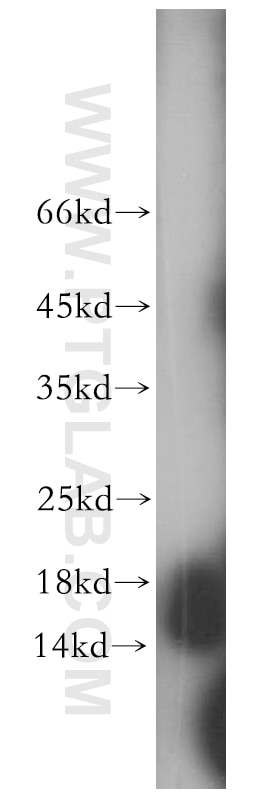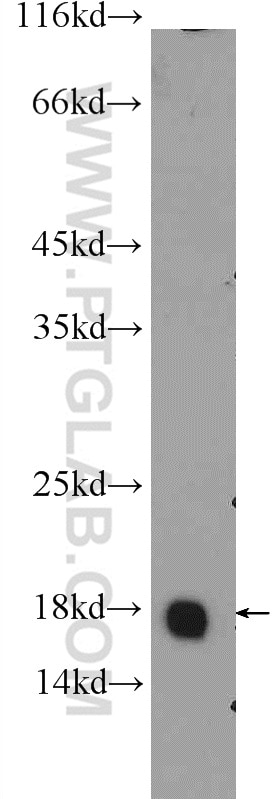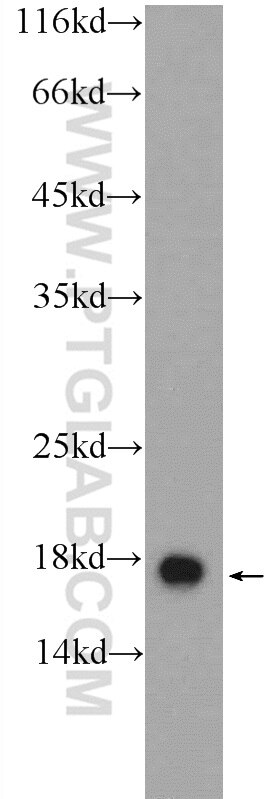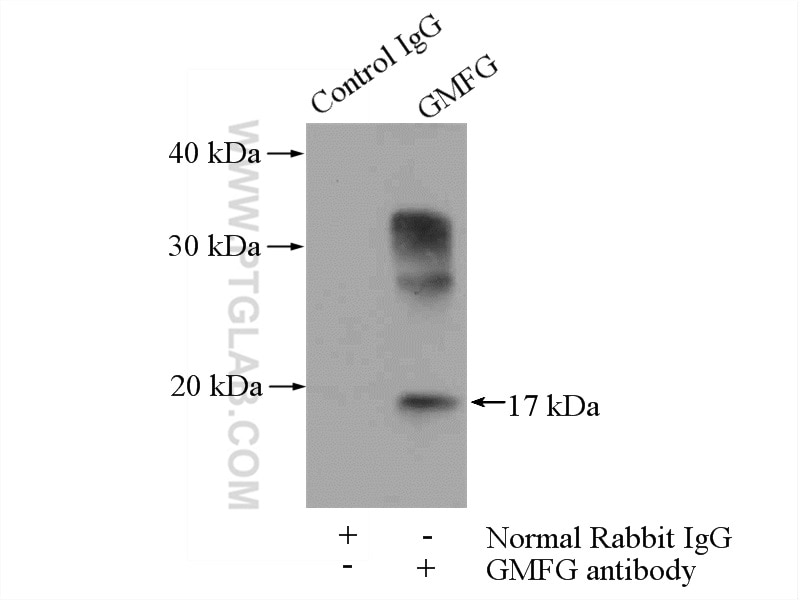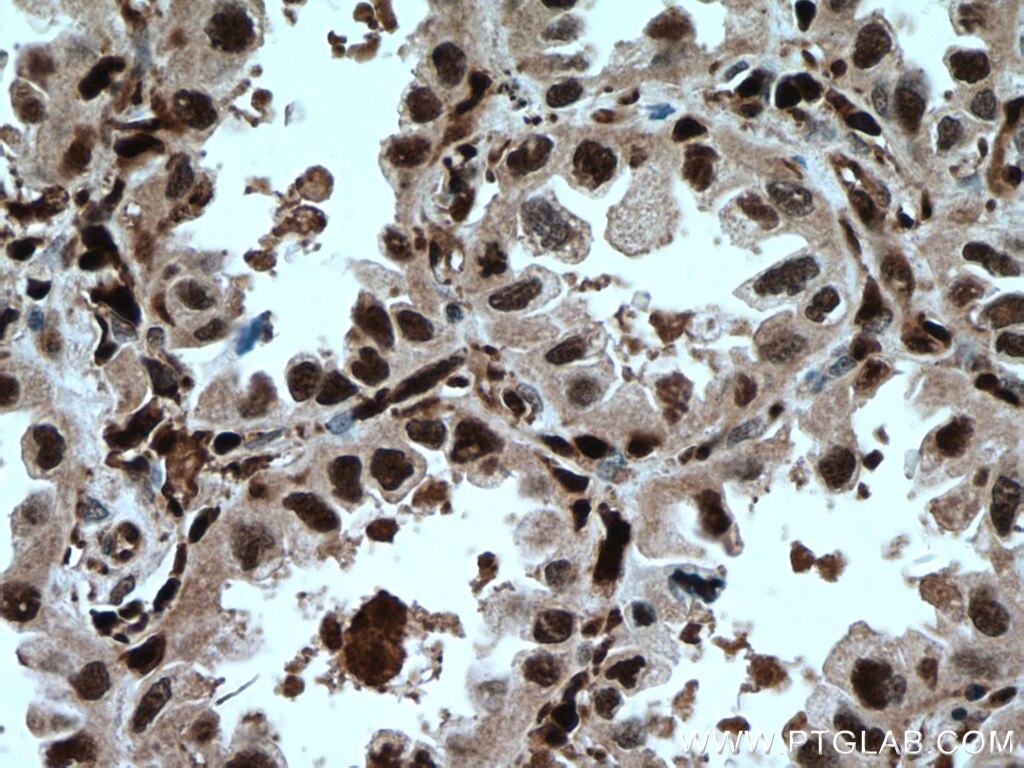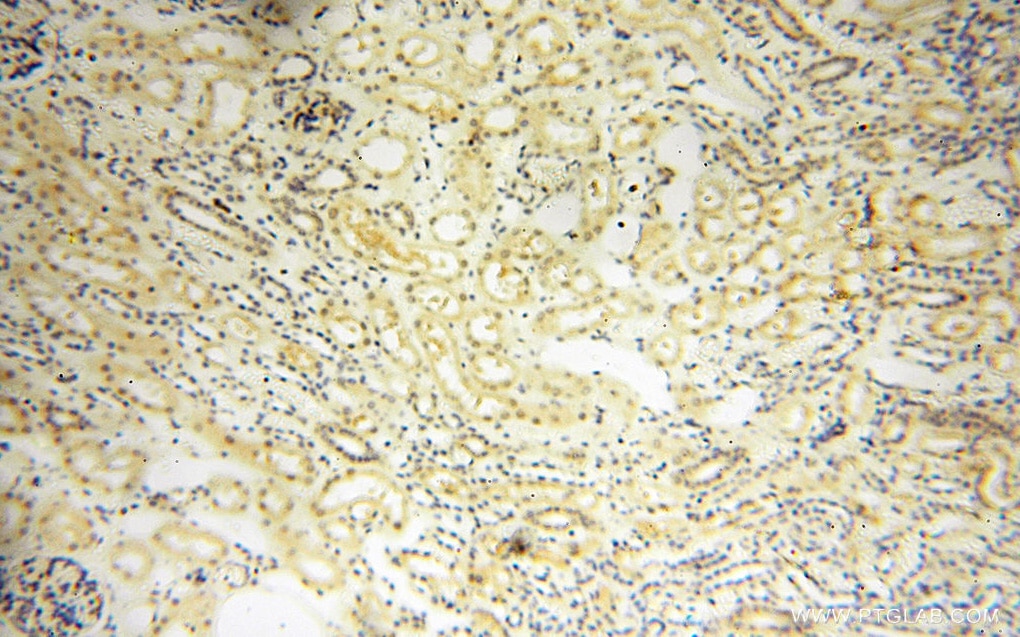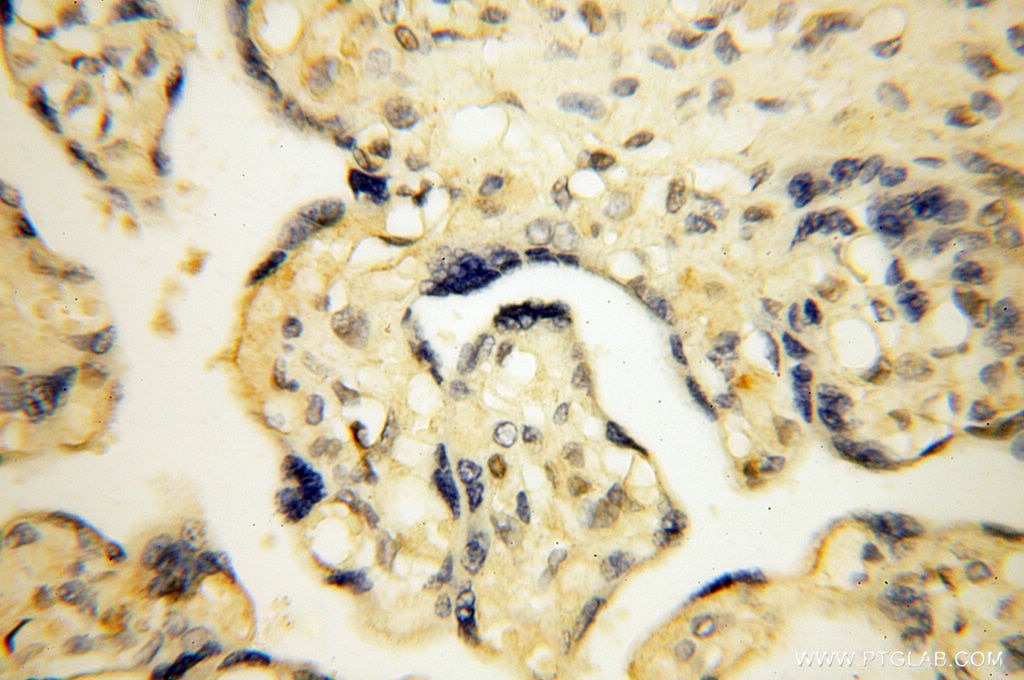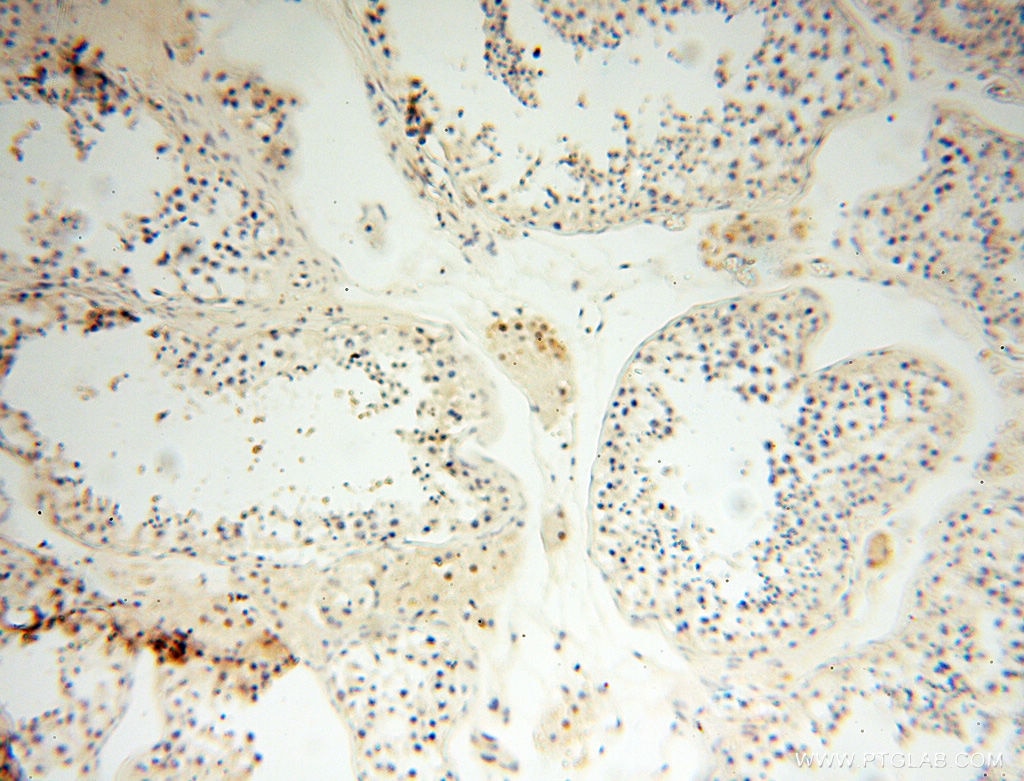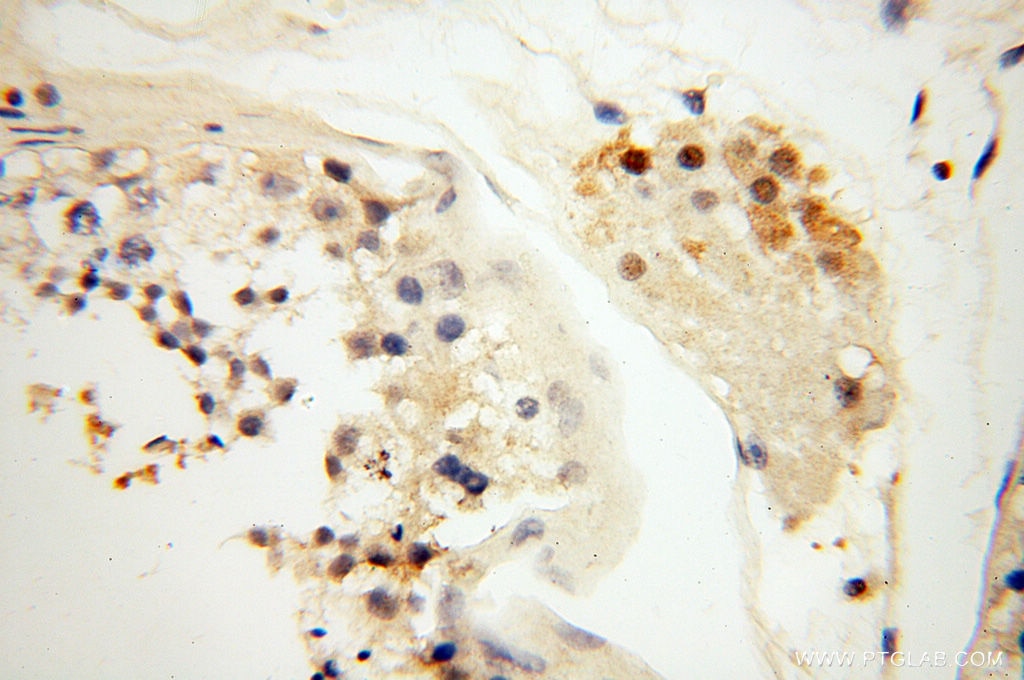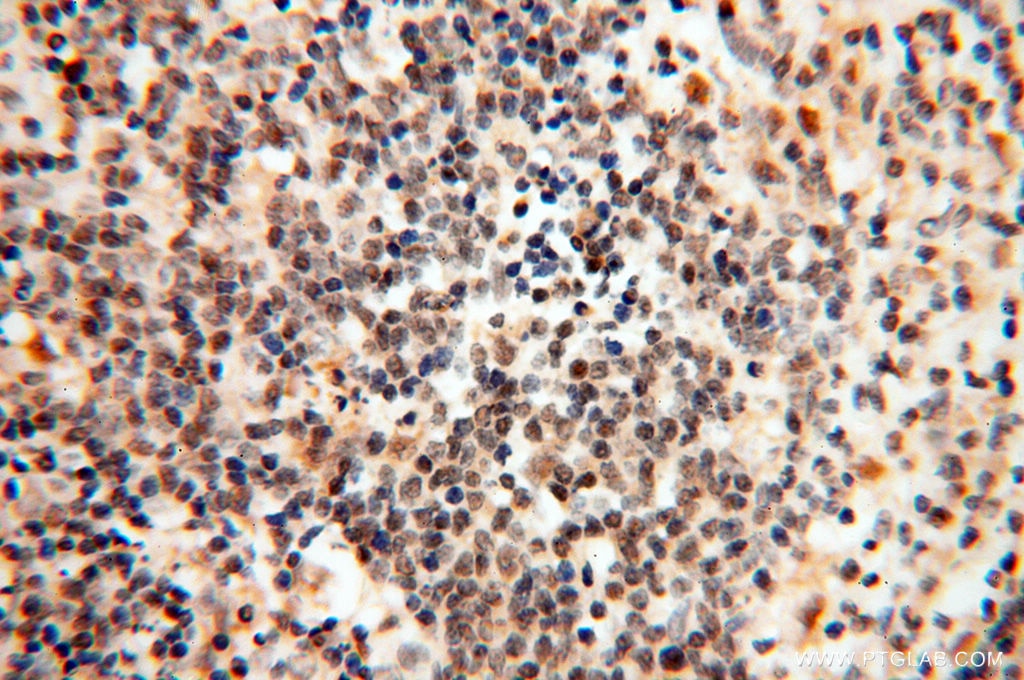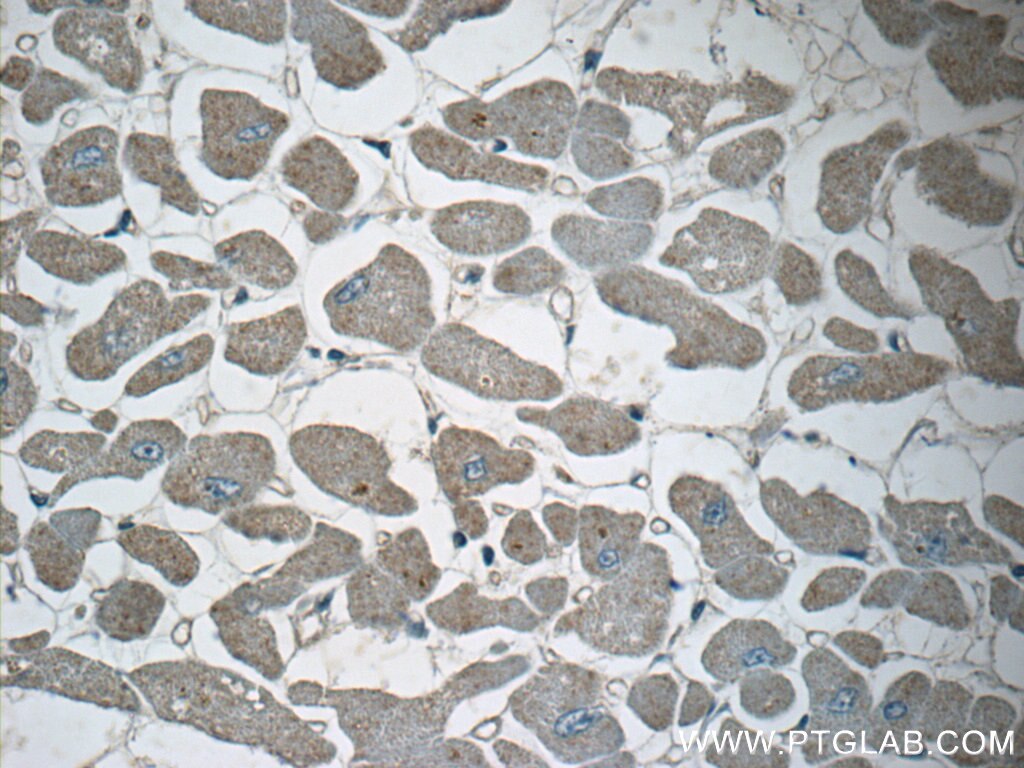Validation Data Gallery
Tested Applications
| Positive WB detected in | rat brain tissue, human heart tissue, human placenta tissue, mouse placenta tissue |
| Positive IP detected in | mouse spleen tissue |
| Positive IHC detected in | human lung cancer tissue, human kidney tissue, human placenta tissue, human testis tissue, human spleen tissue, human heart tissue Note: suggested antigen retrieval with TE buffer pH 9.0; (*) Alternatively, antigen retrieval may be performed with citrate buffer pH 6.0 |
Recommended dilution
| Application | Dilution |
|---|---|
| Western Blot (WB) | WB : 1:500-1:1000 |
| Immunoprecipitation (IP) | IP : 0.5-4.0 ug for 1.0-3.0 mg of total protein lysate |
| Immunohistochemistry (IHC) | IHC : 1:50-1:500 |
| It is recommended that this reagent should be titrated in each testing system to obtain optimal results. | |
| Sample-dependent, Check data in validation data gallery. | |
Published Applications
| KD/KO | See 2 publications below |
| WB | See 6 publications below |
| IHC | See 5 publications below |
| IF | See 1 publications below |
| IP | See 1 publications below |
Product Information
13625-1-AP targets GMFG in WB, IHC, IF, IP, ELISA applications and shows reactivity with human, mouse, rat samples.
| Tested Reactivity | human, mouse, rat |
| Cited Reactivity | human, mouse, rat |
| Host / Isotype | Rabbit / IgG |
| Class | Polyclonal |
| Type | Antibody |
| Immunogen |
CatNo: Ag4538 Product name: Recombinant human GMFG protein Source: e coli.-derived, PGEX-4T Tag: GST Domain: 1-141 aa of BC032819 Sequence: SDSLVVCEVDPELTEKLRKFRFRKETDNAAIIMKVDKDRQMVVLEEEFQNISPEELKMELPERQPRFVVYSYKYVHDDGRVSYPLCFIFSSPVGCKPEQQMMYAGSKNRLVQTAELTKVFEIRTTDDLTEAWLQEKLSFFR 相同性解析による交差性が予測される生物種 |
| Full Name | glia maturation factor, gamma |
| Calculated molecular weight | 141 aa, 17 kDa |
| Observed molecular weight | 17 kDa |
| GenBank accession number | BC032819 |
| Gene Symbol | GMFG |
| Gene ID (NCBI) | 9535 |
| RRID | AB_2110929 |
| Conjugate | Unconjugated |
| Form | |
| Form | Liquid |
| Purification Method | Antigen affinity purification |
| UNIPROT ID | O60234 |
| Storage Buffer | PBS with 0.02% sodium azide and 50% glycerol{{ptg:BufferTemp}}7.3 |
| Storage Conditions | Store at -20°C. Stable for one year after shipment. Aliquoting is unnecessary for -20oC storage. |
Background Information
GMFG, is a highly conserved brain-specific protein that belongs to the GMF subfamily of the larger Actin-binding protein ADF family. GMFG is preferentially expressed in blood vessel cells and immune cells and its ectopic expression enhances cellular functions such as tube-formation and migration in vitro. GMFG mediates neutrophil and T-lymphocyte migration via regulation of actin cytoskeletal reorganization. GMFG also acts as an intracellular regulator of stress-activated signal transduction by demonstrating activation of p38 MAP kinase and transcription factor NF-kB in astrocytes.
Protocols
| Product Specific Protocols | |
|---|---|
| IHC protocol for GMFG antibody 13625-1-AP | Download protocol |
| IP protocol for GMFG antibody 13625-1-AP | Download protocol |
| WB protocol for GMFG antibody 13625-1-AP | Download protocol |
| Standard Protocols | |
|---|---|
| Click here to view our Standard Protocols |
Publications
| Species | Application | Title |
|---|---|---|
Development Coronary veins determine the pattern of sympathetic innervation in the developing heart. | ||
J Leukoc Biol Glia maturation factor-γ regulates amyloid-β42 phagocytosis through scavenger receptor AI in murine macrophages
| ||
Front Cell Dev Biol The Actin-Disassembly Protein Glia Maturation Factor γ Enhances Actin Remodeling and B Cell Antigen Receptor Signaling at the Immune Synapse.
| ||
Front Oncol GMFG Has Potential to Be a Novel Prognostic Marker and Related to Immune Infiltrates in Breast Cancer. | ||
Oncol Rep Expression of glia maturation factor γ is associated with colorectal cancer metastasis and its downregulation suppresses colorectal cancer cell migration and invasion in vitro. | ||
Genes (Basel) High Level of GMFG Correlated to Poor Clinical Outcome and Promoted Cell Migration and Invasion through EMT Pathway in Triple-Negative Breast Cancer |


